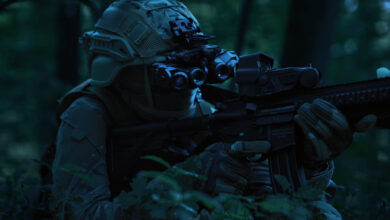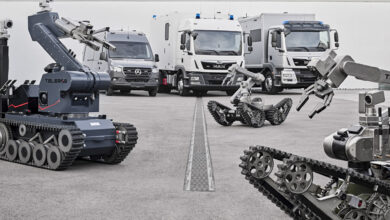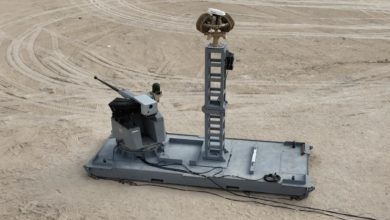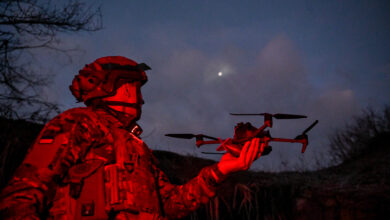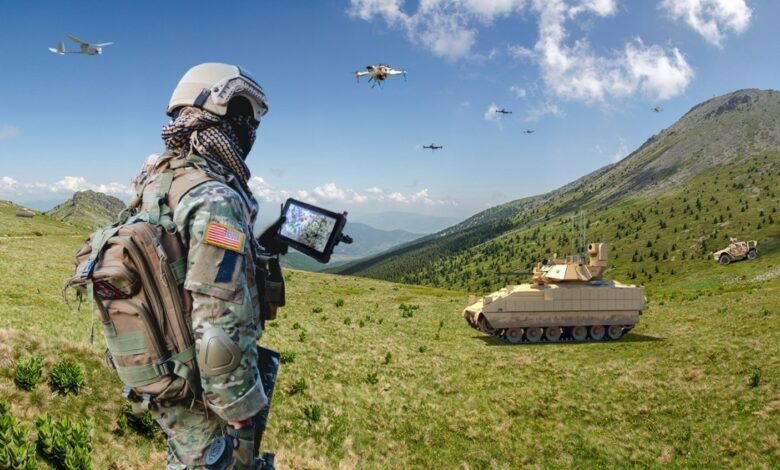
The relentless, bloody battle in eastern Ukraine is reminiscent of old-world warfare, with miles of trenches, tanks, howitzers, and pounding artillery turning cities to rubble, evoking memories of WWII or even WWI battles.
It’s not surprising that many consider war in the 21st century similar to major land, sea, and air battles of 80 years ago. However, the general public is only getting a glimpse of what today’s new technologies are bringing to the battlefield.
In Ukraine, cheaper, faster, and more flexible technology innovations are helping the country achieve the force overmatch few military analysts thought could be possible when Russia first invaded.
This success can be attributed to Ukraine’s courageous, open-minded, and forward-thinking military leadership, which has been willing to create and deploy new technologies to gain an advantage.
In a sense, Ukraine has unwillingly become a technology disruptor, albeit still very much in a preliminary and experimental stage.

Technology Disruption
The Ukraine leadership’s approach to turning the tide on the invasion is not unlike what well-known technology disruptors like Apple, Uber, and Netflix achieved under much different circumstances.
But while these companies created technologies that achieved major shifts in buying habits relatively quickly, skepticism and reliance on large, known assets among decision-makers is causing military technology to progress at a much slower pace.
Achieving force overmatch in 21st-century warfare — especially in peer-to-peer conflicts — requires distributed operations in multi-domain battlefields, working alongside traditionally larger assets. Large assets alone will no longer be enough.
Distributed Operations
The term “distributed operations” may sound like a typical business phrase, but it holds significant importance in the future of warfare. Decision-makers should recognize it as cutting-edge and ground-breaking for military strategies.
What is distributed operations, and how does it contribute to an unfair advantage on the battlefield, whether on the ground, in the air, or at sea? Before my roles at my current company, I was part of a shift in another industry that mirrored the changes unfolding due to the war in Ukraine.
At the turn of the century, skepticism surrounded the shift in the computing industry from centralized mainframe computers to distributed servers. Many experts doubted that smaller, lesser-known companies producing products for this emerging architecture could compete against long-established (but expensive) mainframe computer companies. They were proven wrong.
Today, in real-time in Ukraine, we are witnessing a similar technology shift on the battlefield. Multi-domain, distributed joint forces equipped with intelligent, agile, and resilient small tactical systems outperform peer- and near-peer competitors. These systems, enhanced with embedded artificial intelligence and machine learning, are proving to be force multipliers.

Force Overmatch
Similar to the shift in computational power from centralized to distributed systems some 40 years ago, military decision-makers are now facing a significant change in thinking and strategy. While recognizing the continued importance of large assets, embracing this change is understandably uncertain.
But make no mistake, this shift is happening, and its success is inevitable. Many smaller defense companies, little known or unknown, are pioneering this powerful path to force overmatch in Ukraine and beyond.
Military decision-makers must think creatively about new ways of achieving force overmatch, reducing their reliance on large, expensive, and potentially vulnerable military assets and instead prioritize resiliency, flexibility, and interoperability.
In 21st-century conflicts, victory is as likely to come from smaller and distributed fighting units unleashing swarms of lethal drones as it is from a stealth bomber or naval aircraft carrier thousands of miles away.
While large assets from prime defense contractors remain essential, the increasing need for nimbler forces necessitates turning to agile suppliers.
As with any new technology, the window of time for a competitive edge closes quickly. Should there be another large-scale conflict, such as in Asia or Africa, there will be limited time to observe the effectiveness of “new” technologies. The time to be bold is now.
 Wahid Nawabi is chairman, president, and CEO of AeroVironment, Inc. (www.avinc.com)
Wahid Nawabi is chairman, president, and CEO of AeroVironment, Inc. (www.avinc.com)
The views and opinions expressed here are those of the author and do not necessarily reflect the editorial position of The Defense Post.
The Defense Post aims to publish a wide range of high-quality opinion and analysis from a diverse array of people – do you want to send us yours? Click here to submit an op-ed.




